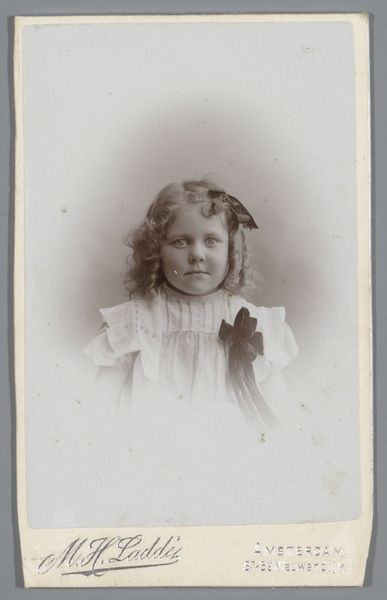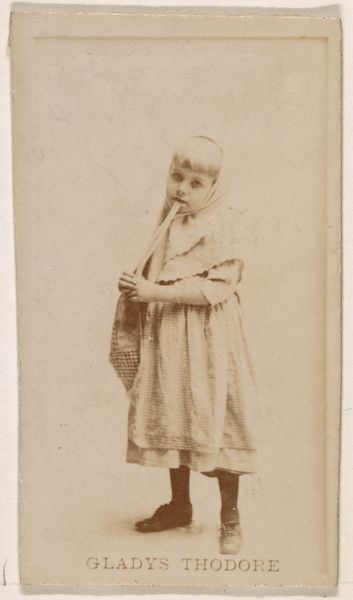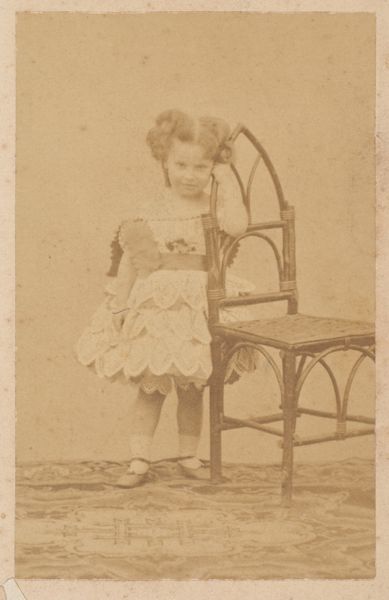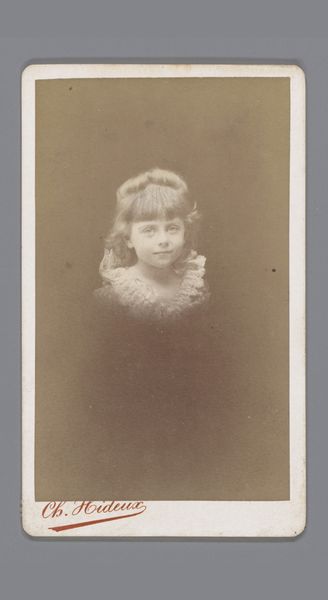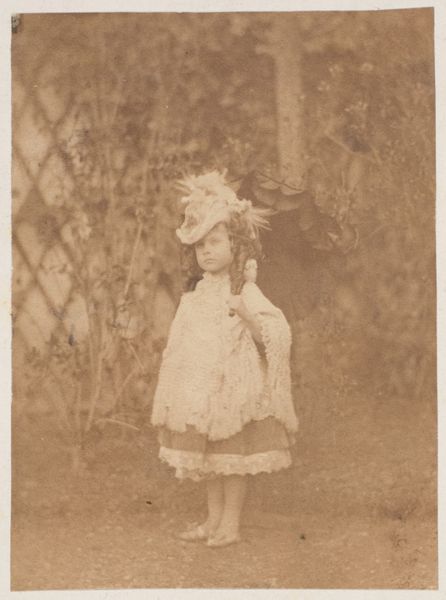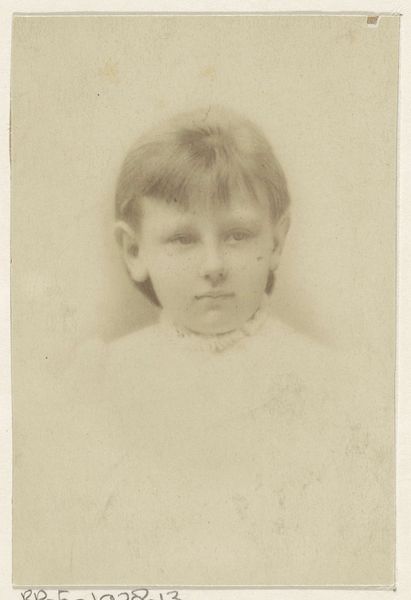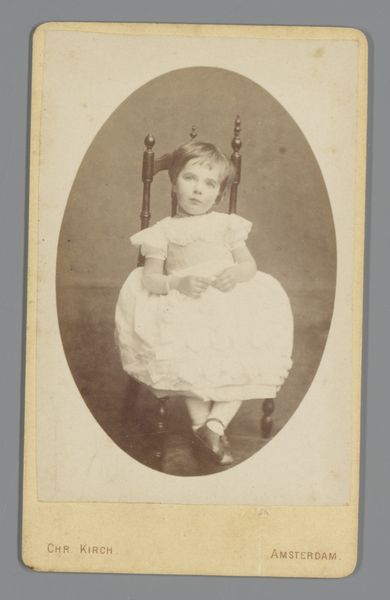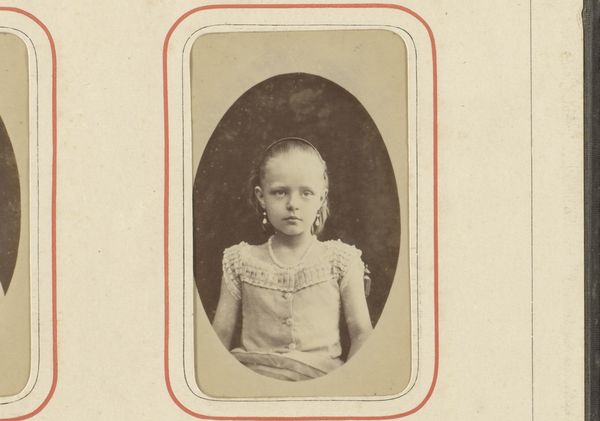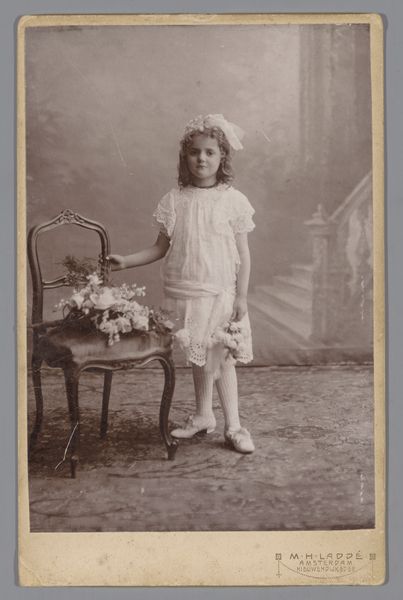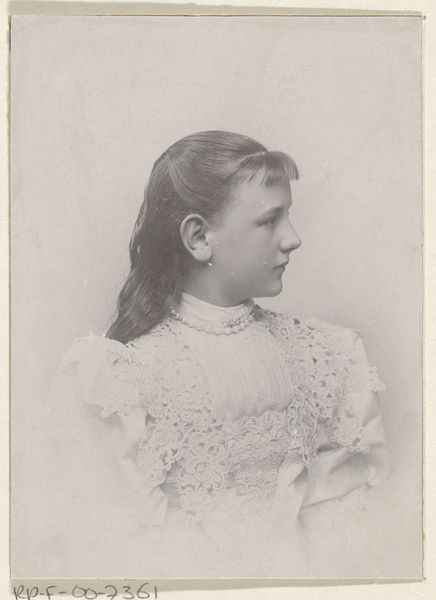
c-print, photography
#
portrait
#
c-print
#
photography
Dimensions: 7.6 x 9.8 cm. (3 x 3 7/8 in.)
Copyright: Public Domain
Curator: Before us, we have a C-print photograph by Pierre-Louis Pierson from the 1860s, titled "La frisure." It's currently held at the Metropolitan Museum of Art. Editor: My first impression is one of formality. Even with the somewhat softened focus characteristic of the period, there’s an undeniable rigidity, both in the young girl’s pose and the setting. Curator: Yes, portraiture in this era held immense symbolic weight, especially concerning societal roles. Children's portraits served not just as records, but as careful constructions of identity and aspiration, mapping family status. The styling of the child in the picture tells a story itself. The attention given to the young girl’s hair speaks of specific period notions, of elegance. Editor: I’m immediately drawn to the materiality of the print itself, though. The warm sepia tones create a tactile quality. I wonder about the darkroom processes involved—the coating of the paper, the development…these early photographic processes were, after all, experiments in alchemy. They had an element of human labor far removed from clicking a button on a modern camera. Curator: Precisely. This type of visual rhetoric reflects societal values around children: innocence and propriety but also performativity. Editor: It strikes me as more than simple record-keeping. Photography in the mid-19th century offered new ways to perform aspiration through industrial technology, even in an era marked by great disparities in wealth. In an expanding consumer culture, newly-available industrial products of textile production, as represented by the girl's dress, or technologies of image making, such as printing techniques, are showcased within the photograph itself. Curator: We're reminded of how much portraits are a display, really—both of what we believe to be our inner selves and the markers we wish to portray outwardly. I notice how much more subdued the background is compared to other examples of his portraiture; it makes me consider how studio operations must have functioned under social conventions. Editor: Indeed, understanding the means of production unlocks a deeper understanding of not just the final product, but also the entire social fabric in which this artwork existed. Curator: Reflecting on this portrait allows us a glance, however framed, into how social rituals become visually solidified over time. Editor: I’ll leave thinking more deeply about how images in all media come to mediate the labor relations across technological and visual regimes.
Comments
No comments
Be the first to comment and join the conversation on the ultimate creative platform.
